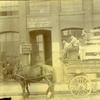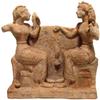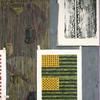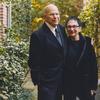Unparalleled California Art Trove Acquired by University of California, Irvine for its Planned Museum
- IRVINE, California
- /
- February 14, 2018
UC Irvine has been gifted the outstanding Buck Collection for its planned Museum and Institute of California Art, or MICA.
An exquisite but long-hidden collection of California art has been given to the University of California, Irvine by the trust of Gerald E. Buck, a Newport Beach developer.
Valued at tens of millions of dollars, the Buck Collection includes classic California Impressionism, a huge Los Angeles night cityscape, and iconic “freeway series” paintings, among many important 20-th century works. Buck, who built sprawling suburban communities from Southern California farmland, meticulously amassed more than 3,200 original works, but never displayed them publicly, other than occasionally lending pieces to museums.
“The Buck Collection cements UCI’s mission to create one of the nation’s finest centers for the appreciation of California art,” said Chancellor Howard Gillman. “For nearly three decades, these beautiful and important pieces have been kept mostly under wraps. We can’t wait to exhibit these gems to the public.”
Buck created the most comprehensive private collection of California modern art in the world, according to dealers and curators, comprising a who’s who of artists from a century ago to contemporary powerhouses such as Richard Diebenkorn, David Park, Joan Brown, Gilbert “Magu” Lujan, Sam Francis and others, many with works at the Whitney Museum of American Art, the Los Angeles County Museum of Art and elsewhere.
“This gift instantly puts UCI on the map as the premier collection and study center at the heart of California art,” said Stephen Barker, dean of UCI’s Claire Trevor School of the Arts and executive director of the UCI Museum and Institute for California Art. “From plein-air to hard-edge abstraction to figurative work, it is just endlessly extraordinary. We are honored and thrilled that Mr. Buck and his family have entrusted this amazing trove of art to UCI.”
Malcolm Warner, executive director of the Laguna Art Museum, said, “This is undeniably the greatest collection of California art ever assembled in private hands.”
Los Angeles art dealer Tobey Moss, who worked with Buck for years, agreed that the compilation was unparalleled. She said he wanted to keep it in Orange County.
“UCI has come out shining like a light; they are so fortunate,” she said. “It’s an amazing collection, backed by Gerald’s scholarship, his aesthetic sense and his confident eye.”
Buck’s daughter, Christina, said her father wanted the paintings, sculptures and his large library given to an institution with extensive research programs in the arts, like UCI’s, where the public and scholars alike could view and study the works.
“UCI is the perfect match,” Christina Buck said. “It makes me so happy that the campus now has the works for students, faculty and, ultimately, people who just love art – like my father did.”
Barker added, “The whereabouts of the massive collection has been the talk of the art world for a number of years.”
Currently stored in a secured Los Angeles facility and in what was Buck’s private exhibition space, the collection will eventually be displayed in a new building on the UCI campus, exactly where architect William Pereira foresaw a museum in his original designs.
Buck, described as likeable but intensely private, was actively involved with Southern California museums as well as the Smithsonian Institution. He died at age 73 in 2013, a few months after the death of Bente, his wife of almost 50 years. Overcoming his natural reserve, during the last year of his life, Buck was preparing a first-ever exhibition of the treasured collection, along with a book and a film.
“My dad always said that art was meant to be seen and enjoyed by people. He’d say, ‘That’s why they make museums – so people can see art and enjoy it,” said Christina Buck.


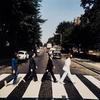

100x100_n.jpg)
